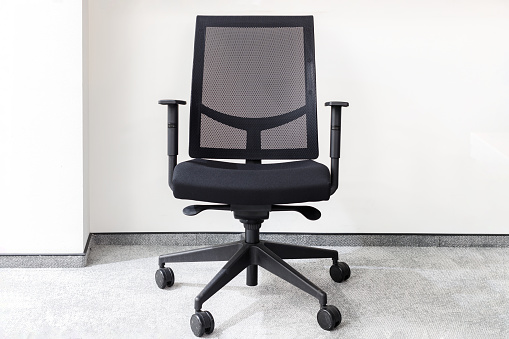Why is an ergonomic chair worth the investment?

Good. Then allow me to introduce you to the wonderful world of ergonomic furniture, specifically to chairs. There are many affordable ergonomic chairs so you don’t always have to spend a lot of money on them.
- How much do you value a lower back free from pain? Is it $20? $20,000?
- What about pain-free wrists? Elbows?
- How would you like to get more done?
- Are you intrigued?
Why chairs? Well, because many people spend quite a bit of time in chairs these days. According to the CDC, one in four (25%) Americans spend more than eight hours sitting per day. The same study also found that 44% of participants reported doing little to no exercise. Only 3% of respondents in the study reported sitting for fewer than four hours per day and were exercising regularly. Only 3%.
More and more people are spending more and more time sitting, great, so what? There is a growing body of Scientific research answering that very question, and it isn’t good. Habitual sitting increases risks for obesity, heart disease, cardiovascular disease, and diabetes. To name a few. In addition to organ damage and weight gain, prolonged sitting also contributes to musculoskeletal disorders as well, think stiff joints and sore backs.
While there is still much to investigate in regards to the hazards of prolonged sitting, the evidence we have today is stark.
How exactly will an ergonomic chair help?
I’m glad you’re still awake! Ergonomics is a relatively new field of research, and it deals with work. The official definition from the International Ergonomics Association is as follows:
‘Ergonomics (or human factors) is the scientific discipline concerned with the understanding of interactions among humans and other elements of a system, and the profession that applies theory, principles, data, and methods to design in order to optimize human well-being and overall system performance.’
What a mouthful. Ergonomics seeks to make work more efficient by eliminating workplace difficulties. Difficulties such as intense pain from sitting all day for example. Each ergonomic chair seeks to minimize pain and maximize comfort in a variety of ways, a few are examined below.
Backrest- Most backrests are between 12 and 19 inches wide, and a good one will support the natural curvature of the spine with its contours. A great backrest will allow for angular adjustment through a lumbar support knob (110-130° is optimal).
Armrests- An armrest should be adjustable. The ideal height is roughly 7-10 inches above the seat cushion. Elbows and forearms should lay comfortably while typing. A properly configured armrest prevents wrist ailments such as carpal tunnel syndrome by prohibiting any dramatic bending of the wrist joint.
Seat Width– A standard seat is 17-20 inches wide, chiefly to ensure sufficient thigh support. This prevents the hip flexors from tightening. It can also improve blood flow to leg muscles. An ideal seat pan provides the sitter with roughly 1 inch on either side of their hips.
Lumbar Support Knob- A ‘firmness’ and a ‘position’ control are crucial for any lumbar support system. Proper lumbar support relieves pressure from the lower back by angling the torso (usually 110-130° as opposed to 90°). The exaggerated angle transfers weight off of the disks of the back. Further, the firmness control enhances user comfort by fine-tuning spinal support and weight distribution.
Seat Height– A quality chair will allow for a cushion range of 15-22 inches from the floor. This range comfortably seats persons between 5′ and 6’4″. The ‘proper’ height is such that the soles of the shoes lay flatly on the floor, and the knees remain bent at a 90° angle.
Seat Depth– A user’s back should lean comfortably against the backrest, but a gap roughly 2 fingers wide should be maintained between the edge of the seat and the user’s knees. A sliding seat is necessary for optimal comfort. A proper seat depth prevents slouching, which is extremely stressful for the lower back.
While the health benefits of the above features are fairly straightforward, worker productivity is also improved. Pain-free employees take fewer breaks, are more focused on their tasks, take fewer sick days, stay at their desks longer, and are more positive in general. All of these boons translate into more time on task and higher quality work; a dream for any office manager.
A quick internet search reveals that ergonomic chairs typically cost between $100 and $2,000, where the best ergonomic chair may cost close to $2000, which is more pricey than a generic chair. However, given the increased productivity, vitality, and overall ambiance ergonomic chairs will bring to your office; I’d say that extra cost is more than compensated for Tech Daily Magazines.





